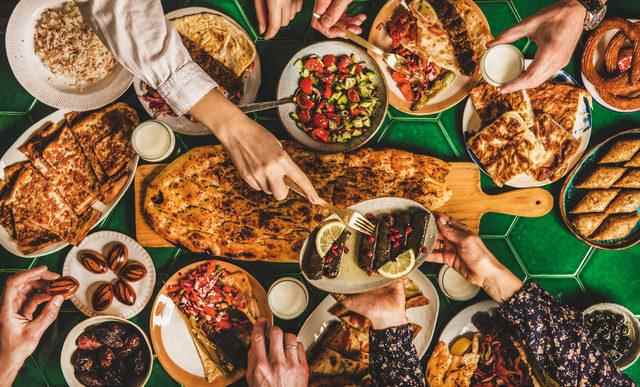The month of Ramadan is an important opportunity for both the nurturing of the soul and the healthier life of our body. While performing fasting in Ramadan, we should not ignore health. For a healthy Ramadan, importance should be given to healthy eating in iftar and sahur.
DON’T TURN THE IFTAR INTO A FEAST
During the month of Ramadan, you should ensure that your body uses the available fat as an energy source. For this, it is useful to reduce carbohydrates. In fact, I recommend that those who can, prefer a ketogenic diet, that is, if they keep their daily carbohydrate intake between 60-80 grams maximum, they will both provide the right fat adaptation and feel less thirsty. You can also help your stomach shrink by eating less during iftar.
SAMPLE IFTAR MENU
Sample iftar menu for women: 2 dates, 1 ladle of vegetable soup, 4 grilled meatballs, 3 tablespoons of basmati rice, 1 bowl of green lentil salad.
Sample iftar menu for men: 2 dates, 1 ladle of vegetable soup, 6 grilled meatballs, 6 tablespoons of basmati rice, 1 bowl of green lentil salad.
THINGS TO BE CONSIDERED IN SAHUR
The foods consumed in sahur and iftar affect the energy level of the next day. By slowing down intestinal motility, fibrous foods allow you to digest food more easily and you will feel more full because it delays intestinal emptying.
RAMADAN WEIGHT CONTROL
After completing the iftar within 1 hour, consuming only liquid until the sahur meal will be very beneficial for your health.
Balancing the insulin level is very important for not feeling hungry the next day and for a good sleep. Only in this way, our body can switch to fat adaptation and the secretion pattern of growth hormone, melatonin and serotonin can be balanced.
SAMPLE SAHUR MENU
Sample sahur menu for women: 1 boiled egg, 5 olives, 1 bowl of avocado salad with cheese
Sample sahur menu for men: 2 or 3 boiled eggs, 10 olives, 1 bowl of avocado salad with cheese
